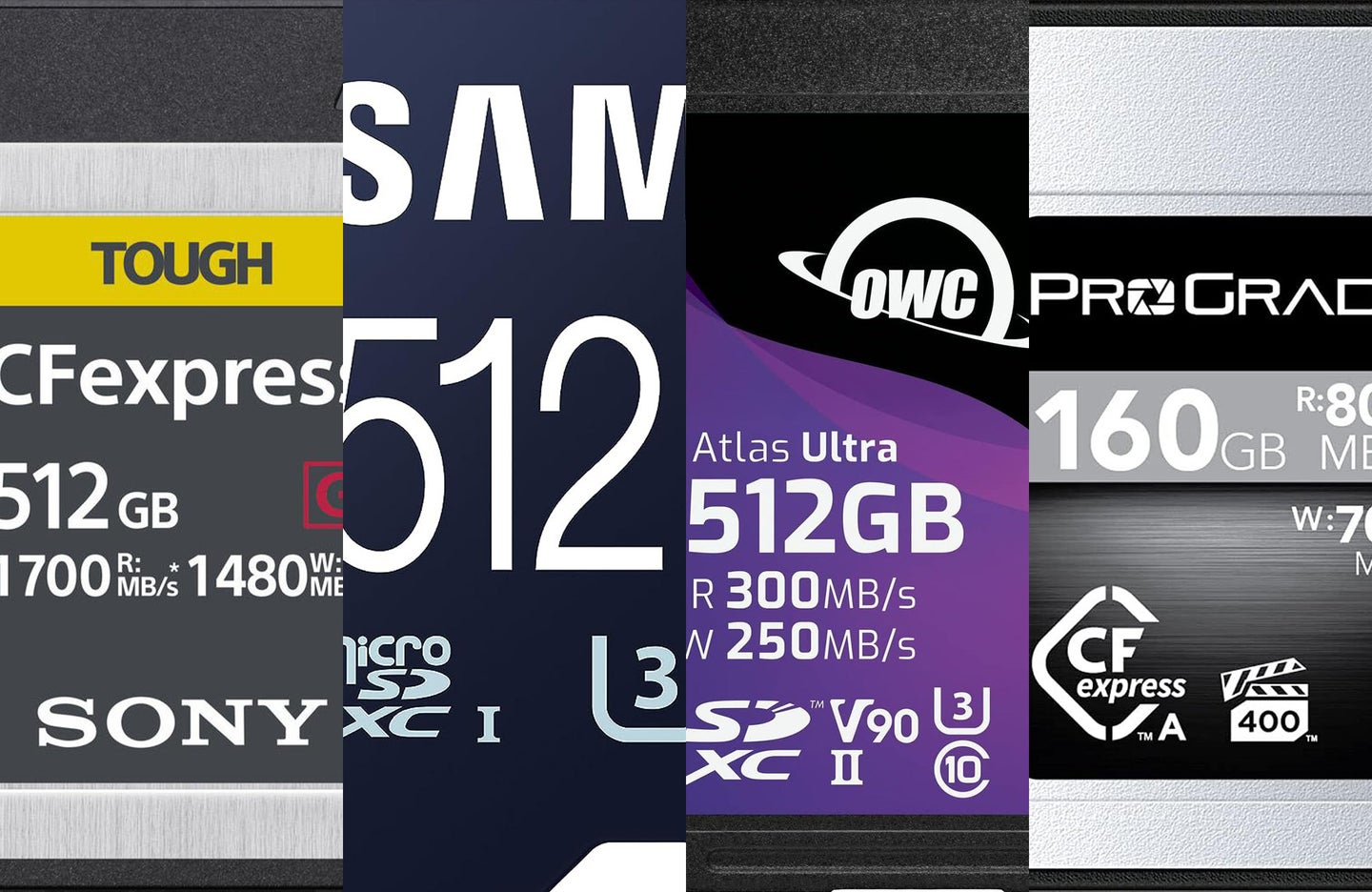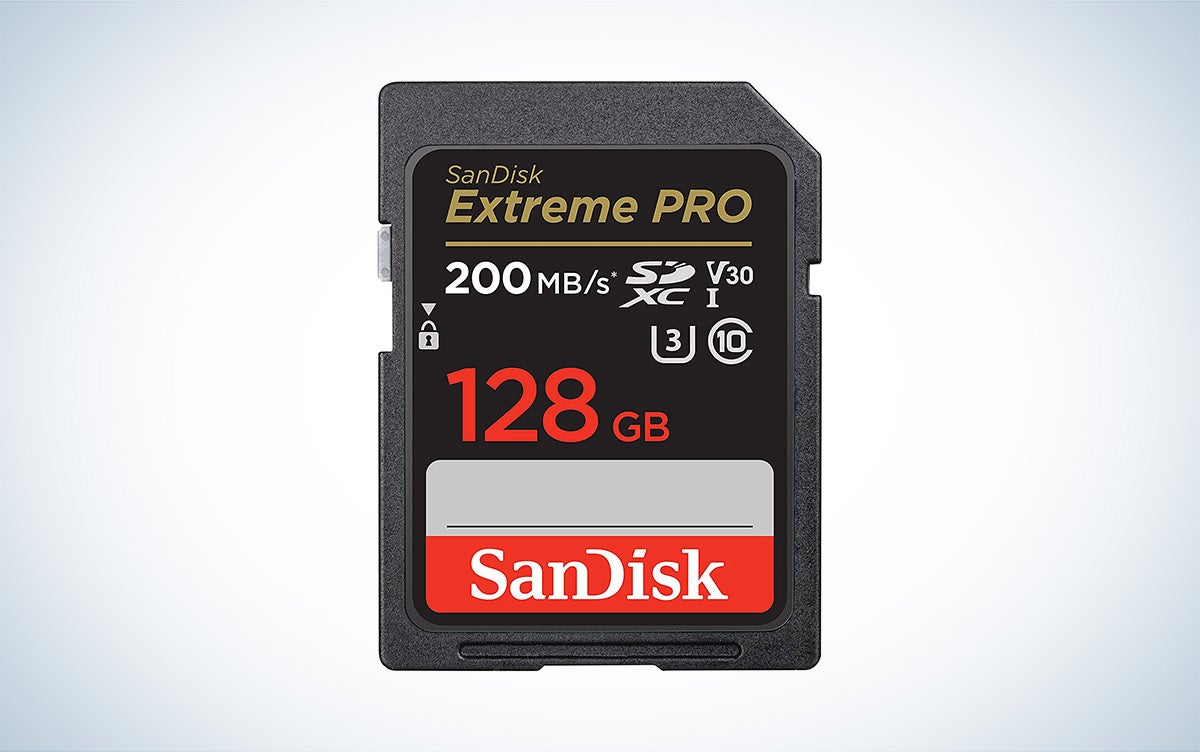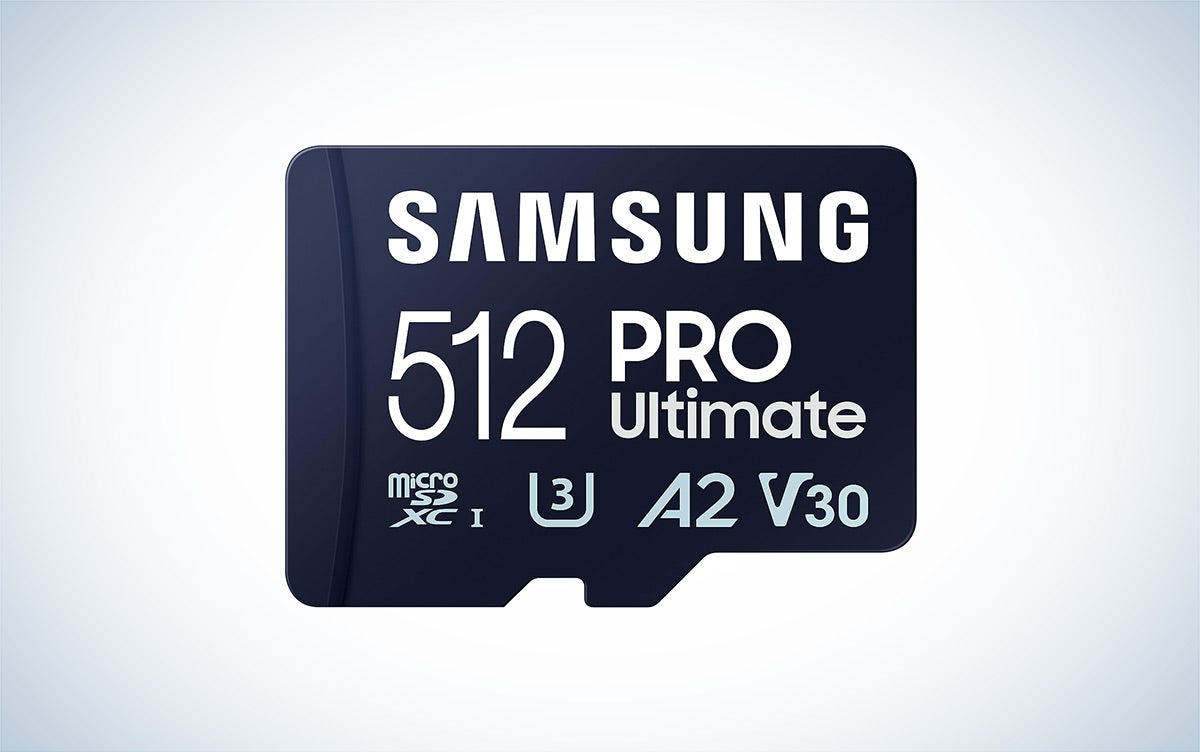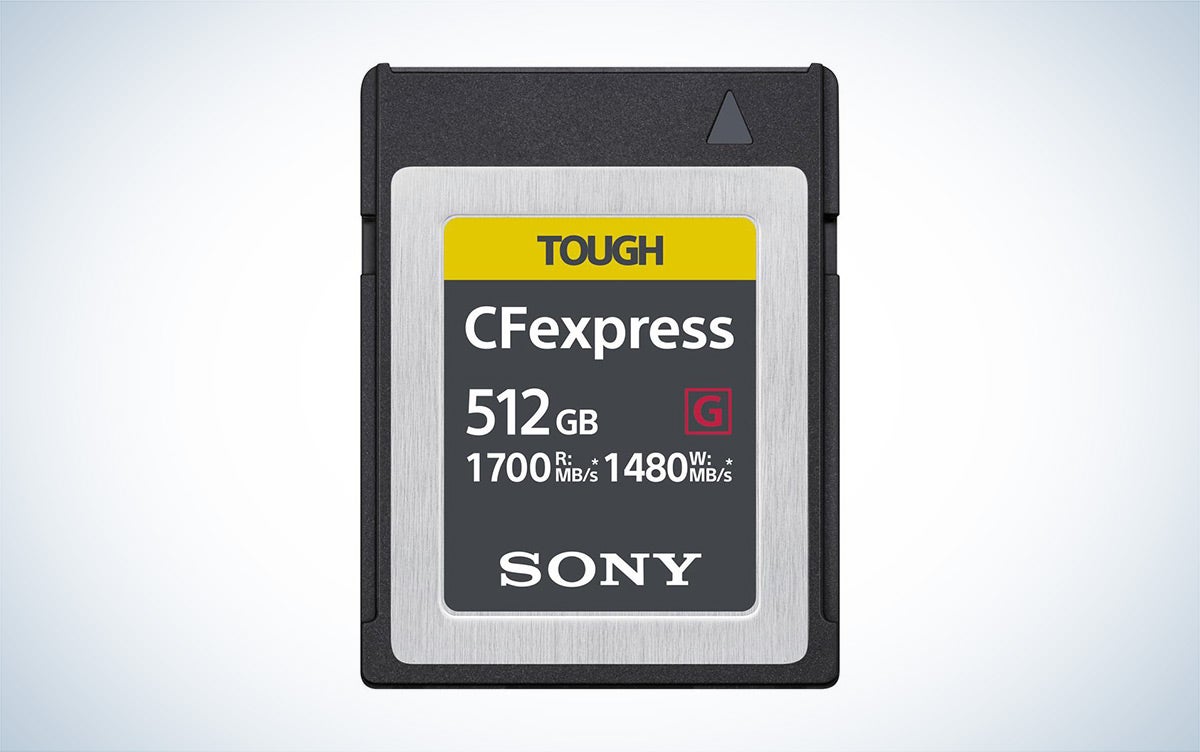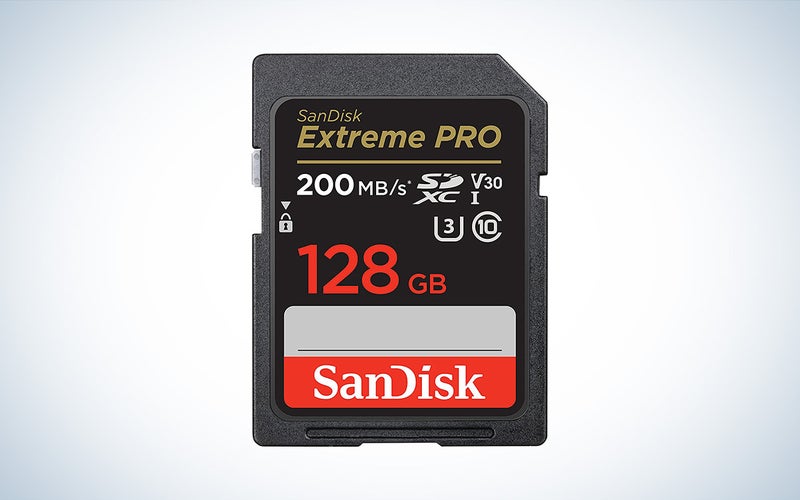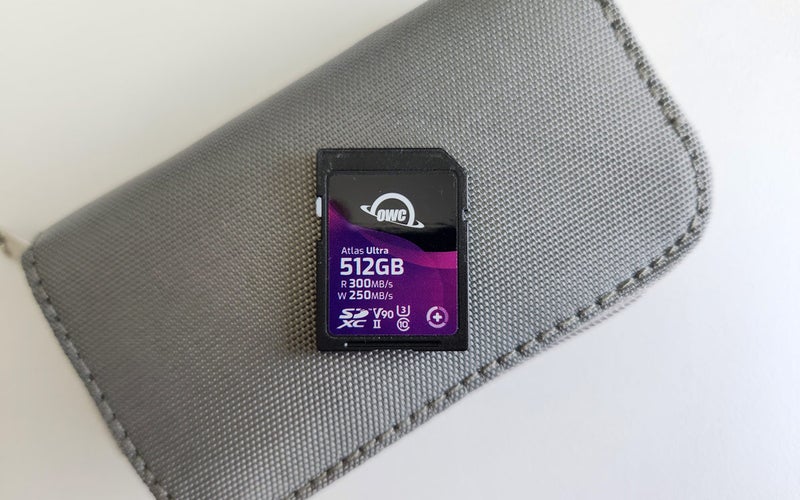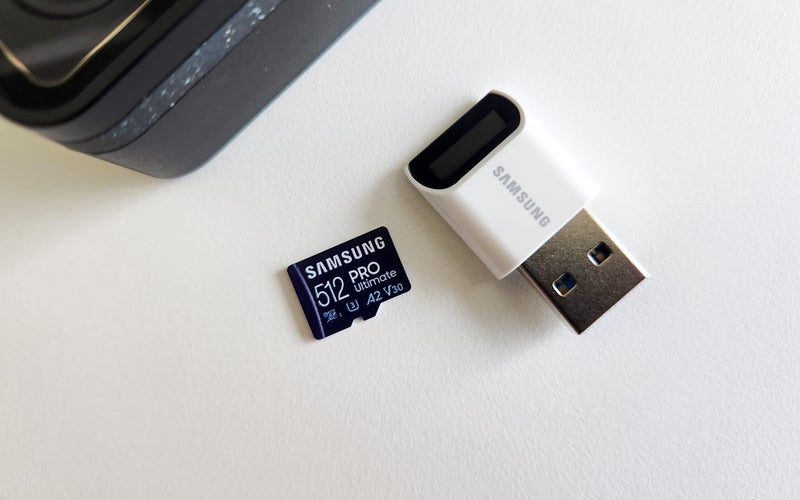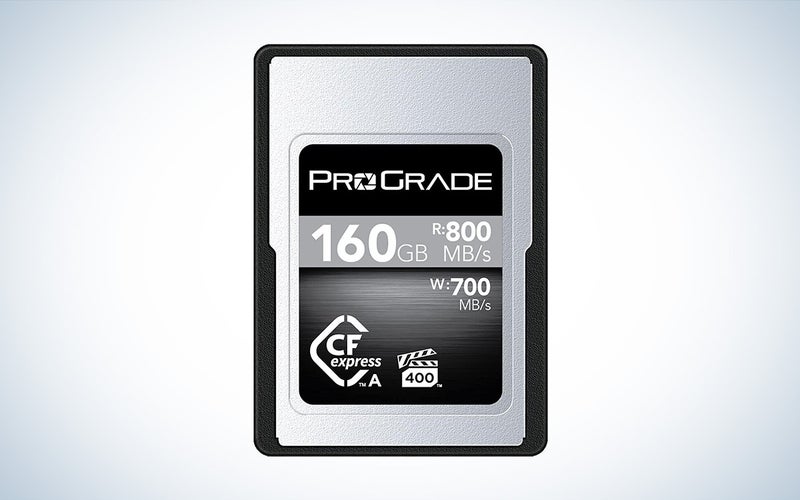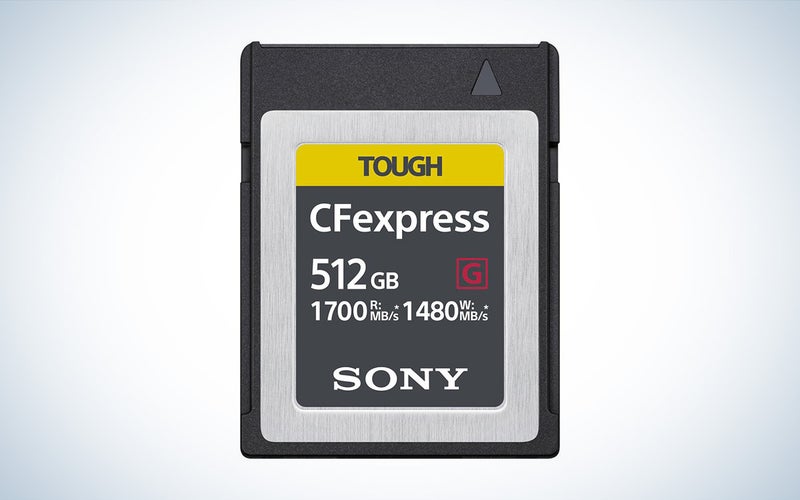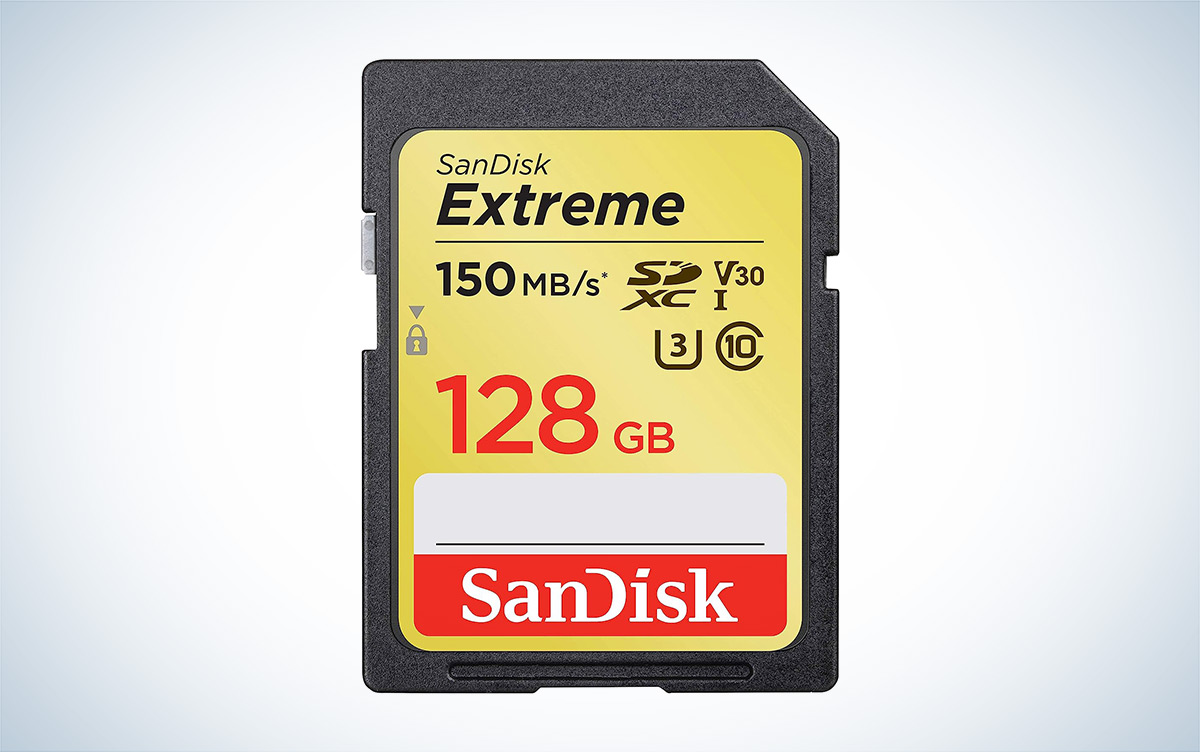We may earn revenue from the products available on this page and participate in affiliate programs. Learn more ›
A photographer can never have too many memory cards for their cameras. After all, you’ll need one in your camera in order to actually record images, as cameras don’t offer onboard storage. Even though memory card durability has improved, cards still are liable to become corrupted, not to mention lost. Having backups is key to safeguarding your photos and keeping you shooting. But buying a card isn’t as simple as grabbing the one with maximum storage. You’ll also need to pay attention to the card type, speed, reliability, and durability. Whether you are looking for SDXC, microSDXC, or CFexpress cards for photo or video needs, the best memory cards for cameras will allow you to confidently snap away.
- Best overall: SanDisk 128GB Extreme PRO UHS-I SDXC
- Best high-speed SDXC: OWC Atlas Ultra SDXC 512GB
- Best microSDXC: Samsung PRO Ultimate 512GB microSDXC
- Best CFexpress Type A: ProGrade Digital 160GB CFexpress Type A Cobalt
- Best CFexpress Type B: Sony 512GB CFexpress Type B Tough
- Best budget: SanDisk Extreme SDXC UHS-I
How we chose the best memory cards for cameras
The writers and editors at Pop Photo have been involved in the photography industry for decades. During that time, we have used most memory cards out there and seen the progression from when 32GB SD cards were groundbreaking and expensive to the development of CFexpress cards which offer faster speeds and even larger capacities. We have hands-on experience with most of the cards on this list, having tested them in extreme conditions and high-demand shooting situations.
Since different cameras require different types of memory cards, we selected the most prominent card types to fit the needs of most. When making our selections, we considered speed, reliability, and durability. We also aimed to choose options at various price points.
The best memory cards for cameras: Reviews & recommendations
Memory cards for cameras—and many of them—are an essential part of every photographer’s kit. Cards can go bad, get lost, or fill up in the middle of a shoot, so it’s important you have a few on you at all times. The options below are some of the best available, offering excellent quality across the board.
Best overall: SanDisk 128GB Extreme PRO UHS-I SDXC
SanDisk
Specs
- Card type: SDXC
- Capacity options: 32GB, 64GB, 128GB, 256GB, 512GB, 1TB
- Read speed: 200 MB/s
- Write speed: 140 MB/s maximum, 30 MB/s minimum
- Video speed class: V30
Pros
- Excellent read and write speeds
- Very durable
- Lots of capacity options
- Reasonably priced
Cons
- Not the best option for video
SanDisk is one of the most trusted names in the memory card industry. Its memory cards for cameras are well-known for their durability and reliability, making them a top choice for most people. The Extreme PRO card is very rugged, shockproof, X-ray proof, waterproof, and also able to withstand temperatures from -13 to 185°F. There’s also a write-protect switch so that you don’t accidentally erase your files before you mean to. Should the card become corrupted, you can utilize the RescuePRO Deluxe software (free with your SanDisk card) to recover your files. And SanDisk offers a limited lifetime warranty, giving you even more peace of mind.
SanDisk makes a few versions of its Extreme PRO line, but the UHS-I with V30 video speed class earns our top spot because of its ideal balance of price and speed for most. It is fast enough to keep up with raw bursts from high-speed cameras and can record up to 4K video. It’s available in capacities from 32GB to 1TB. At this reasonable price, it’s easier to pick up a handful for backup purposes.
Best high-speed SDXC: OWC Atlas Ultra SDXC 512GB
Abby Ferguson
Specs
- Card type: SDXC
- Capacity options: 64GB, 128GB, 256GB, 512GB
- Read speed: 300 MB/s
- Write speed: 250 MB/s maximum, 90 MB/s minimum
- Video speed class: V90
Pros
- Able to record up to 6K video
- Very fast read and write speeds
- IP67 rated and bend, shock, and x-ray resistant
Cons
- Expensive
Videographers or photographers who document fast action need fast and reliable speed from their memory cards. The OWC Atlas Ultra SDXC meets those expectations and then some. This UHS-II card with V90 video speed class offers up to 300 MB/s read speeds and minimum sustained write speeds of 90 MB/s. That makes the card capable of recording up to 6K video or recording fast bursts from sports photographers.
This OWC card is backward compatible with devices that don’t support UHS-II and V90, though you will see lower speeds as a result. OWC also makes an excellent card reader that will help you get those promised read speeds when transferring files. On top of fast speeds, this SD card is durable and rugged. It is IP67 rated, which means that it is dust-resistant and waterproof. And it is bend-, shock-, and X-ray-resistant as well.
Best microSDXC: Samsung PRO Ultimate 512GB microSDXC
Abby Ferguson
Specs
- Card type: microSDXC
- Capacity options: 128GB, 256GB, 512GB
- Read speed: 200 MB/s
- Write speed: 130 MB/s
- Video speed class: V30
Pros
- Able to record up to 4K video and 3D video
- Resistant to X-rays, magnets, drops, wear, and extreme temperatures
- Comes with a USB-A card reader
- Compatible with a range of devices, including Android mobile devices
Cons
- Expensive for a microSDXC
The Samsung PRO Ultimate card is one of the newest microSDXC cards available. Samsung built it for high performance, making it our top choice for those looking for a card for their drones or action cameras. It’s been a fantastic memory card for my GoPro cameras, thanks to its excellent performance. It offers a UHS-1 bus type, which allows for read speeds up to 200 MB/s and write speeds up to 130 MB/s. The V30 video class rating promises write speeds that won’t dip below 30 MB/s, making it compatible with up to 4K or 3D video. It will also be able to handle raw and jpeg burst captures.
The Samsung PRO Ultimate card is also compatible with Android mobile devices and offers support for the Application Performance Class 2 (A2) spec. The A2 spec improves mobile app performance across the board, making this a great card for your smartphone as well. As with most cards, it is resistant to water, X-rays, magnets, drops, and wear. And it can withstand temperatures from -13 to 185°F, allowing you to take it just about anywhere with confidence.
Best CFexpress Type A: ProGrade Digital 160GB CFexpress Type A Cobalt
ProGrade Digital
Specs
- Card type: CFexpress Type A
- Capacity options: 160GB
- Read speed: 800 MB/s
- Write speed: 700 MB/s maximum, 400 MB/s minimum
- Video speed class: VPG 400
Pros
- Shock-, vibration-, and X-ray-proof
- Able to record 8K, 6K, and 4K ProRes video
- Built-in thermal throttling
- VPG 400 certified for minimum sustained write speeds of 400 MB/s
Cons
- Only available in 160GB capacity
Sony cameras are the only ones that use CFexpress Type A cards, making them a niche option. But for Sony users looking for a superb card in order to get the most out of their cameras, this ProGrade option is an excellent choice. It offers read speeds up to 800 MB/s and write speeds up to 700 MB/s.
The Cobalt card is VPG 400-rated, which means that the minimum write speed won’t drop below 400 MB/s. That makes it an ideal memory card for videographers and cinematographers as it supports uninterrupted recording of a variety of codecs. That includes 4K video, 4K and 6K ProRes 4444, 4K, 6K, and 8K ProRes 422 HQ, and more. It‘s also resistant to temperature extremes, shock, vibration, and X-rays, so it will hold up to even your most ambitious shoots.
Best CFexpress Type B: Sony 512GB CFexpress Type B Tough
Sony
Specs
- Card type: CFexpress Type B
- Capacity options: 128GB, 256GB, 512GB, 960GB, 1920GB
- Read speed: 1700 MB/s
- Write speed: 1480 MB/s
- Video speed class: N/A
Pros
- Available in many capacities, including up to 1920GB
- Extremely fast read and write speeds
- Very durable
Cons
- Pricey
Many camera makers are beginning to support the new CFexpress Type B card type. That’s in large part due to the impressive speeds that these cards are capable of. The Sony Tough CFexpress card is capable of up to 1700 MB/s read and 1480 MB/s write speeds. That makes it an ideal choice for professional photographers and videographers who need to get the most out of their pro-level cameras.
As you may guess by the name, the Sony Tough card is highly durable. Sony designed this card with more than three times greater strength than the CFexpress standard for protection against bending. It is tested to 70 newtons of force, capable of withstanding 16.4-foot drops, extreme temperatures, X-rays, electrostatic, and intensive UV sunlight. You can truly use and abuse this card in the harshest conditions, and it will be up for the challenge. Should something go wrong, you’ll have access to Sony’s File Rescue Recover and Media Scan Utility software to recover files you accidentally delete or corrupted files.
Best budget: SanDisk Extreme SDXC UHS-I
SanDisk
Specs
- Card type: SDXC
- Capacity options: 32GB, 64GB, 128GB, 256GB
- Read speed: 180 MB/s
- Write speed: Maximum: 90 MB/s, minimum: 30 MB/s
- Video speed class: V30
Pros
- Very affordable
- Available in four capacities
- Reliable and durable
Cons
- Not as fast as more expensive cards
High-end memory cards get expensive, and many don’t need the blazing-fast speeds that those offer. If you don’t shoot video or fast bursts of photos and don’t need lightning-quick transfers to your computer, a more affordable, basic card will do. The SanDisk Extreme line fits the bill in those situations. It comes at much lower prices than many SDXC cards, so you can pick up a few without your wallet taking a hit.
The lower price does require some compromise, though. The Extreme cards don’t offer as fast of read and write speeds as more expensive options. That said, for most people, it will be plenty fast. The V30 video speed class guarantees minimum write speeds of 30 MB/s, and it’s capable of up to 90 MB/s write speeds as well. And you’ll get up to 180 MB/s read speeds. The built-in write-protect switch helps prevent accidental card wipes. And it is just as durable as more expensive cards. It’s shockproof, X-ray proof, waterproof, and able to withstand temperatures from -13 to 185°F.
What to consider when buying the best memory cards for cameras
Memory cards are riddled with acronyms, letters, and numbers. It’s confusing to sort through what it all means and what actually matters when shopping for memory cards for cameras. Below, you’ll find some of the key things to pay attention to when picking a memory card.
Card type
The very first thing you need to determine is which type of card your camera accepts. Most will utilize SDXC cards (the larger capacity version of older SD cards), while some will require CFexpress. Action cameras and drones rely on microSDXC. A simple search of your user manual or the online listing for your camera will tell you which card you need.
Storage capacity
Once you know what type of card you need, you’ll want to decide how much storage is best for your memory cards for cameras. Storage capacity has grown considerably in recent years, with options available up to 2TB in CFexpress. While you may be tempted to opt for the highest capacity possible, that may not be the best choice.
High-capacity cards get expensive, especially when you get into fast speeds. You’ll need to drop roughly $600 for a 2TB CFexpress, with some costing as much as $1,400. The other issue with large-capacity cards is related to card failure. While memory cards for cameras have become more stable and durable, they still are liable to fail. Or, you may simply lose them. Shooting on lower-capacity cards will force you to transfer images to your computer or hard drive more frequently, meaning you won’t lose as many images if something should happen.
At the end of the day, which storage capacity is best depends on your personal preference and workflow. Just be sure to factor in worst-case scenarios when making your selection.
Read speeds
The read speed of memory cards is an indicator of how quickly you can open something on the card. The read speed impacts how fast transfer times are when moving photos from the card to your computer. These are provided in Megabytes per second (MB/s). If you’re a professional photographer or someone who frequently transfers loads of files at once, you’ll want fast read speeds to get the job done faster.
Read speed is also indicated by the bus interface labeled on the card, which is shown as either UHS-I or UHS-II. UHS-I cards offer transfer speeds up to 104MB/s, while UHS-II can get up to 312 MB/s. It’s important to note that cameras will be compatible with one or the other. You can use UHS-II cards in UHS-I devices, though you will be limited to UHS-I speeds. That means that you are paying for speeds that you aren’t actually able to use, as UHS-II cards are more expensive. You’d be better off opting for a UHS-I card as a result.
It’s important to remember that the card manufacturer will provide the maximum read speed. In order to get numbers close to that, you’ll also need a quality memory card reader. If you use some basic memory card reader that you’ve had for years, expect much slower transfer speeds than what is actually advertised.
Write speeds
Write speed refers to how fast data can be written on your card. This number is especially important for videographers or those who shoot fast bursts of photos, as too low of write speed will be limiting. Cards will typically show the write speed in an MB/s number. However, to make things extra confusing, SDXC cards also use other indicators of write speed that are important to pay attention to.
- Speed class: The speed class is marked by a number within the letter C. This number refers to the minimum sequential write speed. There are five ratings: C2, C4, C6, C8, and C10. If you see a 10 inside the C, that means that it’s guaranteed to sustain a write speed of 10 MB/s.
- UHS speed class: A number within the letter U shows another speed class measurement. There are only two ratings of this class: U1 and U3. This time, you’ll need to multiply the number by 10 to get the minimum sequential write speed. For example, a U3 rating is able to sustain a 30 MB/s write speed.
- Video speed class: The video speed class is marked by the letter V followed by a number. This, once again, refers to the minimum sustained write speed. This class also has five ratings: V6, V10, V30, V60, and V90. As you may guess, V90 means that you will get a minimum sustained write speed of 90 MB/s.
If you’re shopping for a CFexpress card, things are a bit more simple. These cards don’t show all the different speed classes. Instead, they will indicate a maximum write speed, as well as occasionally a minimum write speed. Some will offer a video performance guarantee (VPG), which is indicated by a number inside a clapperboard. For example, if you see a 400 inside the clapperboard, that means the card guarantees minimum sustained write speeds of 400 MB/s
Durability & reliability
While it may be tempting to opt for the cheapest memory card you can find, we advise against that. Cards from little-known brands found on Amazon or other similar sites are much more liable to fail or not be compatible with your camera. At best, you won’t be able to use the card. At worst, you’ll lose images that you spent time creating.
Instead, opt for a reliable and trusted name in the memory card industry. Companies such as Lexar, SanDisk, Sony, ProGrade, Samsung, Angelbird, and OWC are well-known for their quality cards. Many offer more budget-friendly options as long as you don’t need top speeds. And most are durable enough to handle just about anything, including protection against X-rays, water, shock, UV exposure, extreme temperatures, and more.
FAQs
Q: How much do memory cards for cameras cost?
The prices of memory cards for cameras vary greatly, depending on the capacity, card type, and read and write speeds. You can find cards as cheap as $10 for lower-capacity microSDXC cards or as expensive as $1,400 for high-end, large-capacity CFexpress cards.
Q: Is CFexpress better than an SDXC card?
CFexpress is better than SDXC when strictly looking at read and write speeds. CFexpress cards will offer much faster performance across the board compared to SDXC cards, which is why they are becoming the preferred choice for professional photographers and high-end cameras. However, the faster speeds come with a steep price tag. SDXC cards still offer plenty of speed for most and are much more affordable.
Q: Can you buy refurbished memory cards for cameras?
You can purchase refurbished memory cards, though the options are typically limited. We’d recommend purchasing refurbished memory cards for your cameras through reputable sources, such as Adorama, to be sure that the card you are getting won’t fail you soon after purchasing.
Final thoughts on the best memory cards for cameras
- Best overall: SanDisk 128GB Extreme PRO UHS-I SDXC
- Best high-speed SDXC: OWC Atlas Ultra SDXC 512GB
- Best microSDXC: Samsung PRO Ultimate 512GB microSDXC
- Best CFexpress Type A: ProGrade Digital 160GB CFexpress Type A Cobalt
- Best CFexpress Type B: Sony 512GB CFexpress Type B Tough
- Best budget: SanDisk Extreme SDXC UHS-I
A seemingly endless list of memory cards for cameras is available these days. You’ll find cards from a wide range of manufacturers, each promising different performance stats and durability features. At the end of the day, the best memory cards for your cameras will help you get the most out of your equipment and save you time transferring files at the end of a shoot.
Why trust us
PopPhoto has a long history of delivering the opinions of some of the sharpest and most prolific camera dorks the world has to offer. Since 1937, we’ve been reviewing cameras, providing wisdom from well-known photographers, and generally just nerding out about all that goes into making great pictures. Our current crop of writers and editors have decades of professional photography and camera writing experience among them. Collectively, we’ve probably shot with just about every camera and lens combo you can imagine—as well as some obscure stuff you may not even know about. Remember the Casio Tryx folding camera? PopPhoto does.
We also get that buying a camera is a big decision, which is why we’re dedicated to helping folks choose the right one (or, in our case “ones”) for their needs. Case in point: Handing over top dollar for an expensive rig may leave you unsatisfied if it doesn’t fit your preferred shooting style. Sure, a $6,000 sports-oriented DSLR can capture landscapes, but do you really need to do it at 30 frames-per-second? No, you don’t.
